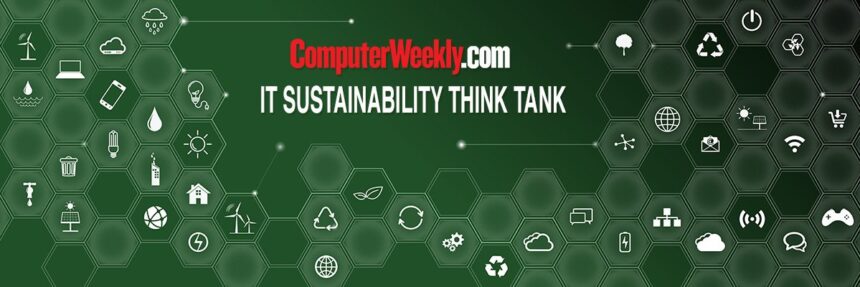In the contemporary landscape of corporate responsibility, environmental sustainability has become a vital concern. With enterprises facing increasing regulatory pressure to record and mitigate their carbon emissions, energy usage, and overall sustainability practices, CIOs and IT departments find themselves at the forefront of this paradigm shift.
As stewards of digital infrastructure and data management, CIOs and IT directors play a pivotal role in ensuring that organisations not only meet compliance standards but also embrace meaningful sustainable practices.
This article delves into the necessary steps CIOs and IT departments must take to attain a comprehensive and accurate view of their environmental impact while navigating the evolving regulatory landscape.
Understanding the regulatory landscape
The regulatory frameworks governing carbon emissions and sustainability are evolving rapidly in response to global efforts to combat climate change. It is imperative that enterprises stay abreast of these changes to ensure compliance and mitigate associated risks.
CIOs and IT directors play a pivotal role in this regard, necessitating them to allocate resources towards monitoring regulatory developments, assessing their implications on organisational practices, and implementing necessary adjustments in IT strategy, infrastructure, and operations. Furthermore, with heightened demands for comprehensive data on carbon emissions and sustainability practices, CIOs and IT directors must ensure thorough data collection not only within their own operations but also throughout their supply chains.
Harnessing technology for data collection and analysis
Advanced data analytics tools can help achieve full compliance by gathering and analysing data comprehensively. This may involve implementing robust tracking systems to capture data at various supply chain stages, ensuring accurate reporting. Collaboration with other departments, such as procurement and logistics, is essential to gather relevant data and align with regulatory requirements.
Technology serves as a cornerstone for accurately measuring and managing carbon emissions and energy usage. CIOs can leverage collection tools and analytics platforms capable of aggregating data from diverse sources across the organisation’s supply chain.
By making use of Internet of Things (IoT) sensors, cloud-based storage offerings, and advanced analytics, organisations can streamline data collection processes, enhance accuracy, and gain real-time insights into sustainability metrics.
Incorporating sustainability into IT governance
Effective governance is essential for ensuring full compliance with regulatory requirements. CIOs and IT directors must integrate sustainability metrics into existing IT governance frameworks. This involves aligning sustainability goals with overarching business objectives, establishing clear accountability structures, and defining key performance indicators (KPIs) to track progress.
By embedding sustainability considerations into decision-making processes, organisations can foster a culture of environmental responsibility and drive continuous improvement in sustainability performance.
Engaging stakeholders for transparency and impact
Achieving a comprehensive understanding of carbon emissions and sustainability requires collaboration not only within the organisation but also with external stakeholders, including supply chain partners.
CIOs are instrumental for enabling cross-functional collaboration between IT, procurement, operations, and sustainability departments to streamline data collection efforts and ensure data integrity.
Moreover, organisations must forge close partnerships with suppliers to establish transparency and accountability throughout the supply chain. Transparency and stakeholder engagement are essential components of demonstrating organisational dedication to sustainability.
CIOs and IT departments should prioritise transparency by accurately reporting carbon emissions, energy usage, and sustainability performance metrics to both internal and external stakeholders.
By making use of digital platforms and communication channels, organisations can disseminate relevant information and engage stakeholders in constructive dialogue regarding sustainability initiatives.
The importance of data insights for sustainability
CIOs and IT directors can play a pivotal role in fostering sustainable practices within organisations. By investing in research and development, they can explore emerging technologies like machine learning and renewable energy offerings.
These innovations help optimise resource usage, reduce carbon footprint, and enhance operational efficiency, ensuring organisations remain competitive in a dynamic landscape.
Furthermore, CIOs and IT departments possess a powerful tool – data-driven insights – for advancing sustainability. Through advanced analytics and machine learning, organisations can uncover hidden patterns, identify inefficiencies, and pinpoint opportunities for improvement across operations.
Predictive analytics enables proactive measures to optimise energy usage, while anomaly detection algorithms identify potential environmental impacts. Integrating sustainability into broader data analytics frameworks provides a comprehensive understanding of an organisation’s environmental footprint.
Green IT and renewable energy
To enhance resilience and sustainability, CIOs and IT directors should foster green IT infrastructure in alignment with circular economy principles.
Green IT encompasses strategies like energy-efficient hardware, virtualisation, and datacentre optimisation to minimise environmental impact. Investing in energy-efficient servers, cooling systems, and storage devices reduces carbon footprint and operational costs.
Virtualisation consolidates IT resources, improving scalability and resilience while minimising environmental impact. This approach supports circular economy principles by promoting resource efficiency and minimising waste.
Transitioning to renewable energy sources is vital for sustainable business practices. CIOs and IT departments can lead this shift by incorporating renewable energy solutions into their infrastructure. This might include sourcing renewable energy for datacentres, investing in on-site solar or wind power, or joining renewable energy procurement agreements. Embracing renewables not only reduces reliance on fossil fuels but also aids in decarbonising the energy sector.
Sustainability is not solely a technological endeavour but also a cultural shift that requires collective commitment and engagement.
Fostering a culture of environmental responsibility within the organisation is paramount for long-term sustainability success. By integrating sustainability into everyday operations, engaging employees, and incentivising green practices, organisations can create a workplace where environmental consciousness becomes ingrained in the company ethos.
With effort and commitment, businesses can make significant strides towards a more sustainable future, benefiting both the environment and their bottom line.

